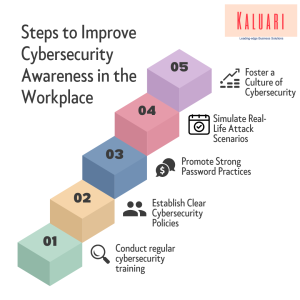Cyber threats continue to evolve in complexity and frequency. Regardless of size or industry, businesses face an increasingly hostile cyber environment. Understanding the trends and preparing for future threats is essential for safeguarding sensitive information and maintaining operational continuity.
Read Also: The Hidden Threat: How Email Blacklisting Affects Deliverability
Current and Emerging Cyber Threats
1. Ransomware Attacks
Ransomware remains one of the most prevalent and damaging cyber threats. Cybercriminals have become more sophisticated, targeting larger organizations with deep pockets. The rise of Ransomware-as-a-Service (RaaS) has also democratized this threat, allowing even non-technical attackers to launch devastating campaigns.
2. Phishing Scams
Phishing continues to be a significant attack vector, with increasingly sophisticated tactics. Spear-phishing, where attackers tailor their messages to specific individuals or organizations, has proven particularly effective. Using social engineering to exploit human psychology makes phishing a persistent threat.
3. Supply Chain Attacks
Cybercriminals are increasingly targeting third-party vendors and suppliers to gain access to more extensive networks. These supply chain attacks can be particularly damaging as they exploit trusted relationships between businesses and their partners, making them difficult to detect and mitigate.
4. Zero-Day Exploits
Zero-day vulnerabilities—flaws in software that are unknown to the vendor—pose significant risks. Attackers can exploit these vulnerabilities before patching them, potentially causing widespread damage. The discovery and use of zero-day exploits are becoming more common, requiring businesses to stay vigilant.
5. Cloud Security Risks
As businesses migrate to the cloud, the security of cloud environments has become a significant concern. Misconfigurations, insufficient access controls, and data breaches in the cloud can have severe consequences, making it crucial for organizations to implement robust cloud security measures.
Future Trends in Cyber Threats
1. AI-Driven Attacks
As artificial intelligence (AI) and machine learning (ML) technologies advance, cybercriminals leverage these tools to enhance attacks. AI-driven attacks can analyze large datasets to identify vulnerabilities, automate phishing campaigns, and even create convincing deepfake content.
2. Quantum Computing Threats
Quantum computing, while still in its infancy, poses a potential future threat to cybersecurity. As quantum computers become more powerful, they could break existing encryption methods, rendering current security protocols obsolete. Preparing for a post-quantum world will be a significant challenge.
3. Internet of Things (IoT) Vulnerabilities
The proliferation of IoT devices introduces new security challenges. Many IoT devices are not designed with security, making them easy targets for attackers. As the number of connected devices grows, so does the attack surface, requiring businesses to implement stronger IoT security measures.
4. Cyber-Physical Attacks
With the increasing convergence of digital and physical systems, cyber-physical attacks that target critical infrastructure are becoming a genuine concern. These attacks could disrupt essential services such as power grids, water supplies, and transportation systems, leading to widespread chaos.
Kaluari’s Proactive Approach
At Kaluari, we understand the evolving nature of cyber threats and the need for businesses to stay ahead of these challenges. Our proactive approach to cybersecurity involves continuous monitoring, threat intelligence, and regular updates to our security protocols. We invest in cutting-edge technologies and collaborate with industry experts to anticipate future threats and develop robust defense strategies.
Our comprehensive suite of cyber-resilient solutions includes advanced threat detection, incident response, and employee training programs designed to mitigate risks and enhance your organization’s security posture. By partnering with Kaluari, businesses can confidently navigate the complex cyber landscape and protect their critical assets.
The cyber threat landscape is constantly changing, and businesses must remain vigilant and proactive in their defense strategies. Organizations can safeguard their digital assets and ensure long-term success in an increasingly digital world by understanding current threats, preparing for future challenges, and partnering with experts like Kaluari.
Related: 8 Common Email Security Mistakes to Avoid
Sign up for our comprehensive solutions today and equip your business with the knowledge and skills needed for success in this dynamic industry. Don’t miss out on this opportunity to elevate your cyber resilience and keep your organization in check. Explore our tailored solutions at Kaluari and keep your business, data, and devices online no matter what threats come your way.
Visit our website or contact us today to protect your network, users, and data from online threats and recover from a disaster within seconds.





Pingback: The Role of AI and Machine Learning in Cybersecurity
Pingback: 10 Cybersecurity Best Practices Every Business Should Implement
Pingback: Top 5 Cyber Threats and Defense Strategies